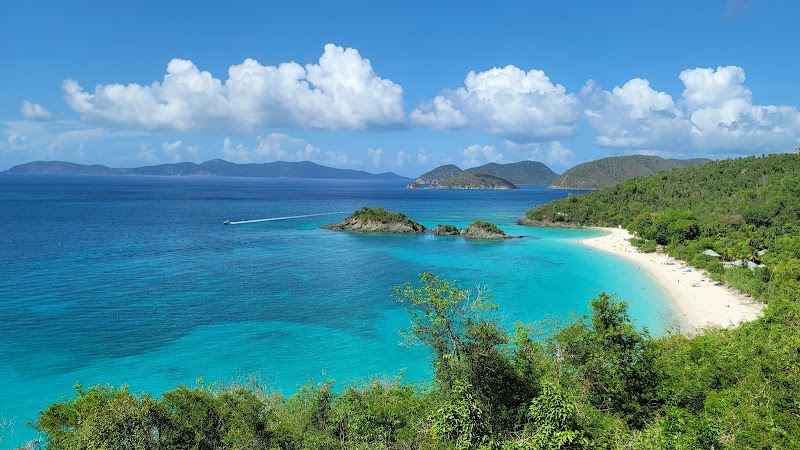Explore Fajardo PR: The Local Favorite for Outdoor Adventures
Fajardo, Puerto Rico, offers a vibrant playground for outdoor activities, from coastal kayaking to forest hiking and luminous bay swims. This guide highlights practical tips and vivid experiences to help adventurers plan and embrace the raw energy of Fajardo’s natural landscape.
Adventure Tips
Start Early or Late
Avoid the midday heat by scheduling hikes or paddle trips in early morning or late afternoon to stay cool and enjoy calmer waters.
Wear Traction Footwear
Paths include sandy, rocky, and wooden boardwalk sections that can get slippery, so bring sturdy shoes with good grip.
Pack Hydration
Trail and outdoor activities often lack potable water sources; carry at least 2 liters per person to stay hydrated in the humid climate.
Reserve Guided Tours in Advance
For kayaking or bioluminescent bay tours, booking ahead ensures availability, especially in peak seasons.
Explore Fajardo PR: The Local Favorite for Outdoor Adventures
Fajardo, Puerto Rico stands out as the go-to spot for outdoor enthusiasts eager to engage with nature’s raw energy and Caribbean vibrancy. Whether you’re drawn by the promise of a coastal kayak paddle, a trail hike through thick forest, or a night swim in bioluminescent waters, Fajardo demands attention.
Begin your adventure at the Las Cabezas de San Juan Nature Reserve. Here, a 2.5-mile trail pushes through mangroves and coastal forest, climbing gently to panoramic views where the sea challenges the horizon. The terrain is a mix of sandy paths and wooden walkways, manageable for casual hikers yet engaging enough to keep experienced adventurers alert to shifting roots and occasional slick rocks. Expect an elevation gain around 300 feet, enough to awaken your legs but never exhaust them.
Water awaits just off trailhead shores, where wind-riffled waves dare kayakers to explore hidden coves. These waters carry a hint of the ocean’s power, ripples pushing forward with subtle urgency that tests your paddle strokes and focus. As day transitions to twilight, the famed bioluminescent bay nearby comes alive, waters lighting with microorganisms that pulse like living stars. It’s a natural spectacle, fuel for anticipation and respect for this fiercely vibrant ecosystem.
Planning your visit means preparing for the island’s sharp sun and tropical humidity. Early morning or late afternoon hikes limit heat exposure and maximize wildlife sightings. Bring sturdy, closed-toe shoes with tread for varied terrain and the occasional slippery plank. Hydration packs or water bottles are essential—streams are absent on the trail, and the air coaxes moisture from your skin faster than expected.
Fajardo balances outdoor thrills with practical accessibility. Local outfitters offer guided kayak and snorkeling tours, perfect for those wanting expert insight or a safety net. For self-guided visitors, maps and signage are reliable, but a smartphone app or offline GPS adds a layer of security. Keep an eye out for coquí frogs, their calls punctuating quiet moments in the forest, and the occasional pelican soaring with measured grace above the coastline.
The key to engaging with Fajardo’s outdoors is respect for its pace and power. It’s a place that invites you to move with measured intent, feel the pull of wind and water, and understand the terrain’s quiet demands. Here, adventure isn’t about conquering but participating in a landscape that remains fiercely itself, awaiting your curiosity and careful steps.
Nearby Trips
All Adventures
Boat Charters
Water Activities
Adventures near Fajardo
Discover the unique and memorable adventures that make Fajardo special.
Frequently Asked Questions
What is the best way to experience the bioluminescent bay?
Joining a guided kayak or boat tour in the evening offers safe, controlled access to the bioluminescent waters, maximizing visibility of the glowing microorganisms while protecting the fragile ecosystem.
Are the hiking trails suitable for beginners?
Yes, most trails, like those in Las Cabezas de San Juan Reserve, are moderate with clearly marked paths and gentle elevation gains, making them accessible to casual hikers while still offering engagement for experienced adventurers.
What wildlife might I encounter on hikes around Fajardo?
Look for coquí frogs in the forest underbrush, brown pelicans soaring overhead, and occasional iguanas basking on rocks. Bird watchers may spot species like the Puerto Rican tody and the Bananaquit.
Is it necessary to book tours in advance?
During peak tourist seasons, booking guided kayaking or bioluminescent bay tours ahead is recommended to secure a spot, especially for popular evening excursions.
Are there any environmental guidelines visitors should follow?
Visitors should stick to marked trails to protect sensitive plant life, avoid touching or disturbing wildlife, and refrain from using soaps or chemicals in natural water bodies to preserve the ecosystem.
Can I camp within the reserve or nearby areas?
Camping inside Las Cabezas de San Juan Reserve is not allowed. However, local campgrounds and eco-lodges are available in Fajardo town for overnight stays.
Recommended Gear
Trail Shoes with Good Grip
Protects your feet and provides stability over mixed terrain, including sandy, rocky, and wooden sections.
Hydration Pack or Water Bottles
Critical to maintain hydration in the tropical heat and humidity where natural water sources are scarce.
Lightweight Rain Jacket
Helps stay dry during brief tropical showers common in spring and summer afternoons.
Headlamp or Waterproof Flashlight
Essential if taking bioluminescent bay nighttime tours for safe navigation in low light.
Local Insights
Hidden Gems
- "The lesser-known Vista del Morro offers a quieter, less trafficked vantage point overlooking the Atlantic Ocean."
- "A small mangrove tunnel within the reserve invites kayak explorers to navigate a shaded water maze teeming with birdlife."
Wildlife
- "Coquí frogs, iconic to Puerto Rico, use their distinctive calls to communicate after dusk."
- "Brown pelicans patrol the coastline, often seen diving sharply for fish with precise speed."
History
"Las Cabezas de San Juan once served as a strategic lookout point during Spanish colonial times, its lighthouse standing as a testament to maritime navigation history."

